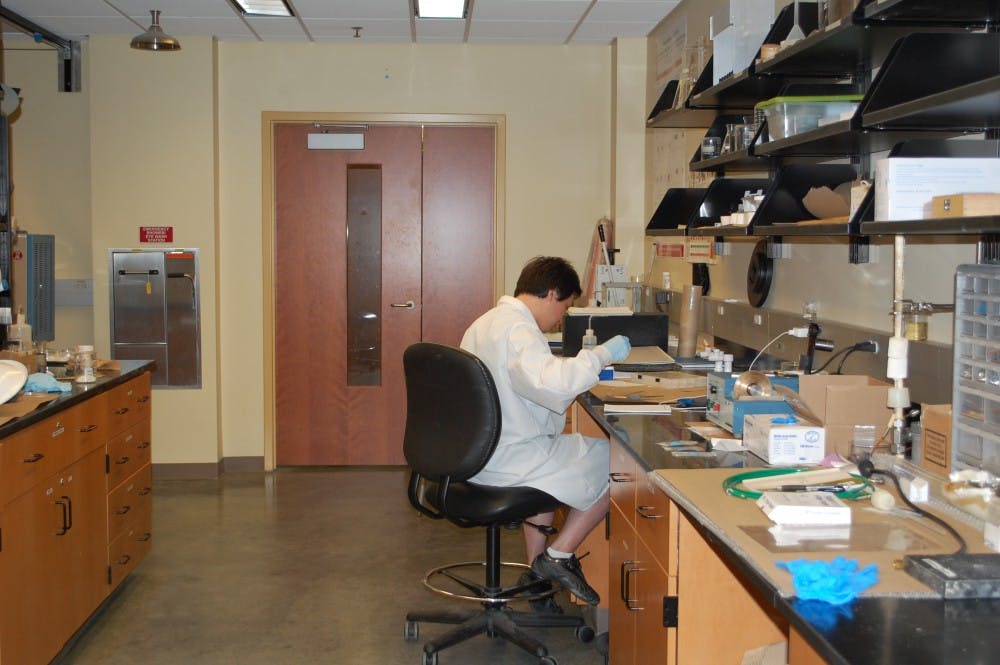A team of University of South Carolina researchers was recently awarded a $3.2 million grant from the U.S. Department of Energy for the development of a solid oxide fuel cell that could change the nation’s approach to energy.
Mechanical engineering professor Kevin Huang and chemical engineering professors Ralph Edward White and Jason Hattrick-Simpers have been working on the fuel cell system for the past three years. The grant, funded through the new Reliable Electricity Based on Electrochemical Systems (REBELS) will enable the team to apply their research by creating a prototype.
Only 13 REBELS grants were distributed nationwide.
“It’s very competitive to get funding from ARP-E, and usually the funding goes to renowned, prominent universities. It’s a big push for our visibility to the community and across the nation,” Huang said. “It’s a big honor. A lot of people got excited, including me.”
Solid oxide fuel cells are ceramic-based and convert chemical energy into electrical energy. Though engineers have been developing the technology for decades, researchers continue to seek ways to implement the fuel cells on a larger scale.
“Currently, the major barrier to the commercialization of this technology is the cost and the reliability,” Huang said. “ARP-E’s target is to lower the operating temperature of the solid oxide fuel cell so that the reliability and the cost can be improved.”
In addition to building a fuel cell that operates at lower temperatures, Huang and his team are working to give their prototype the potential to not only generate power, but also to store it.
“The fuel cell, in general, is used for power generation. But if we add a new dimension, a new functionality to the fuel cell system, it could be very important for widespread renewable energy in the future,” Huang said.
If fuel cells like the one being developed by USC researchers were integrated into the nation’s power grid, they would provide supplemental power during periods of high demand. Currently, when demand is too high for power plants to meet — on especially hot days when many households run air conditioning — additional power is generated by smaller, auxiliary power plants that burn fossil fuels. Huang’s prototype is designed to replace these auxiliary plants as a secondary source of power.
“Right now the fuel cell is modular, compact, and is not ready for the large, premium power generation,” Huang said. “Now, we’re in the hundred kilowatt range. So that is perfect for that auxiliary power generation and also distributive generation.”
Solid oxide fuel cells are desirable alternatives to fossil fuel-burning auxiliary plants because while auxiliary plants have low efficiency and high emissions, fuel cells have high efficiency and low emissions.
To build a fuel cell prototype, Huang and his team are collaborating with researchers from the University of Texas- Austin, Clemson University and the University of Maryland.
If the prototype is successful, USC researchers’ solid oxide fuel cell will provide an efficient way to generate, distribute, and store electrical energy and could help lower carbon emissions, reduce the nation’s reliance on fossil fuels, stabilize the power grid, and cut costs.
“Right now, the whole nation is aware of global warming and climate change because of greenhouse emissions,” Huang said. “So pursuing a high efficiency with low emission power generating device is critically important to our clean energy future.”

